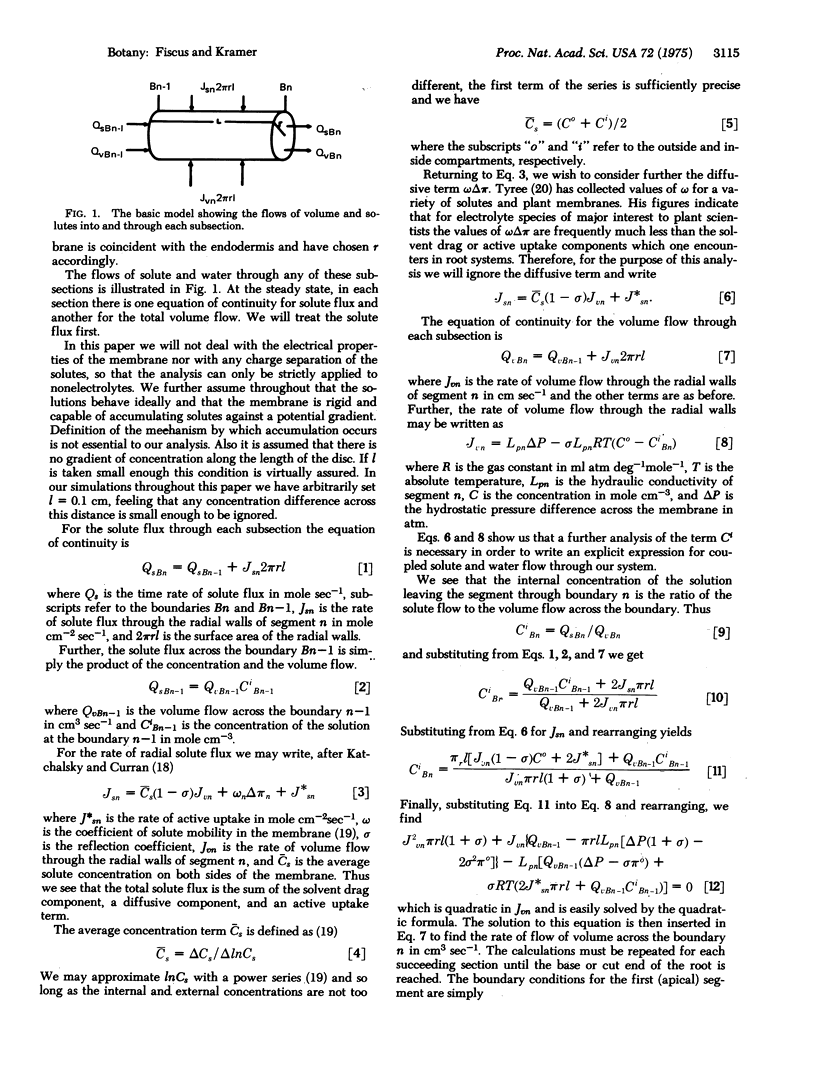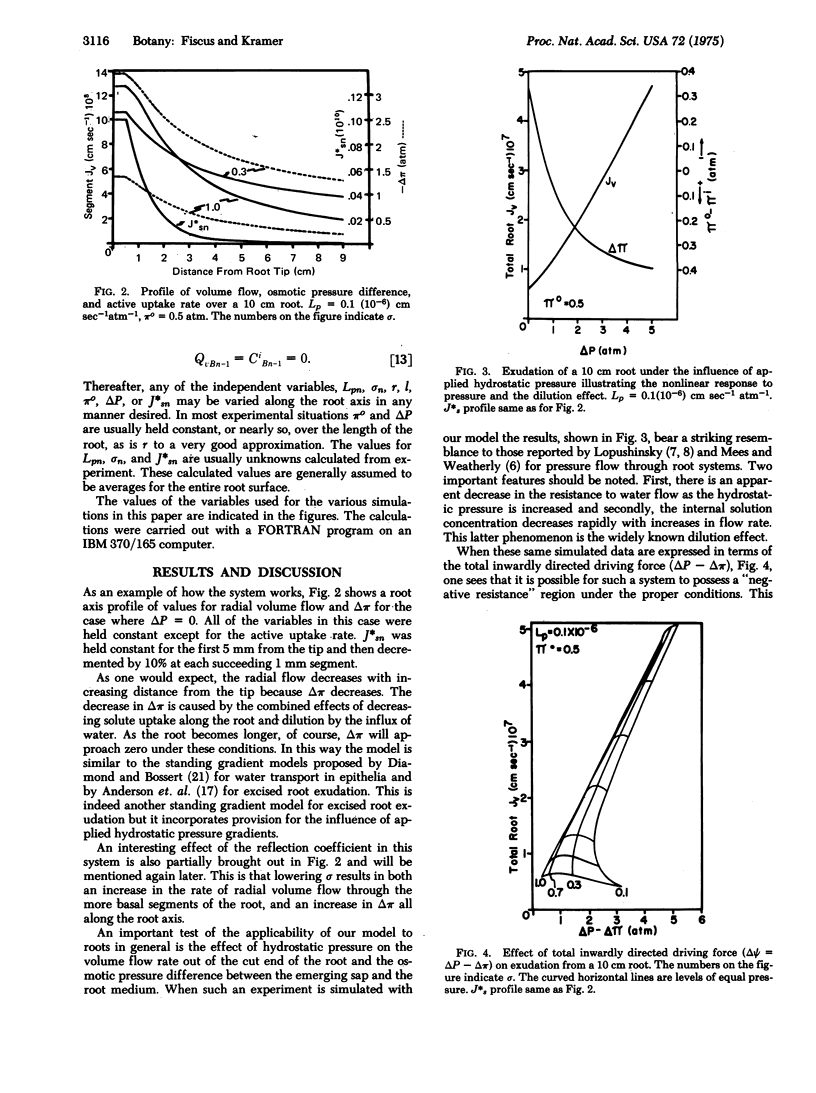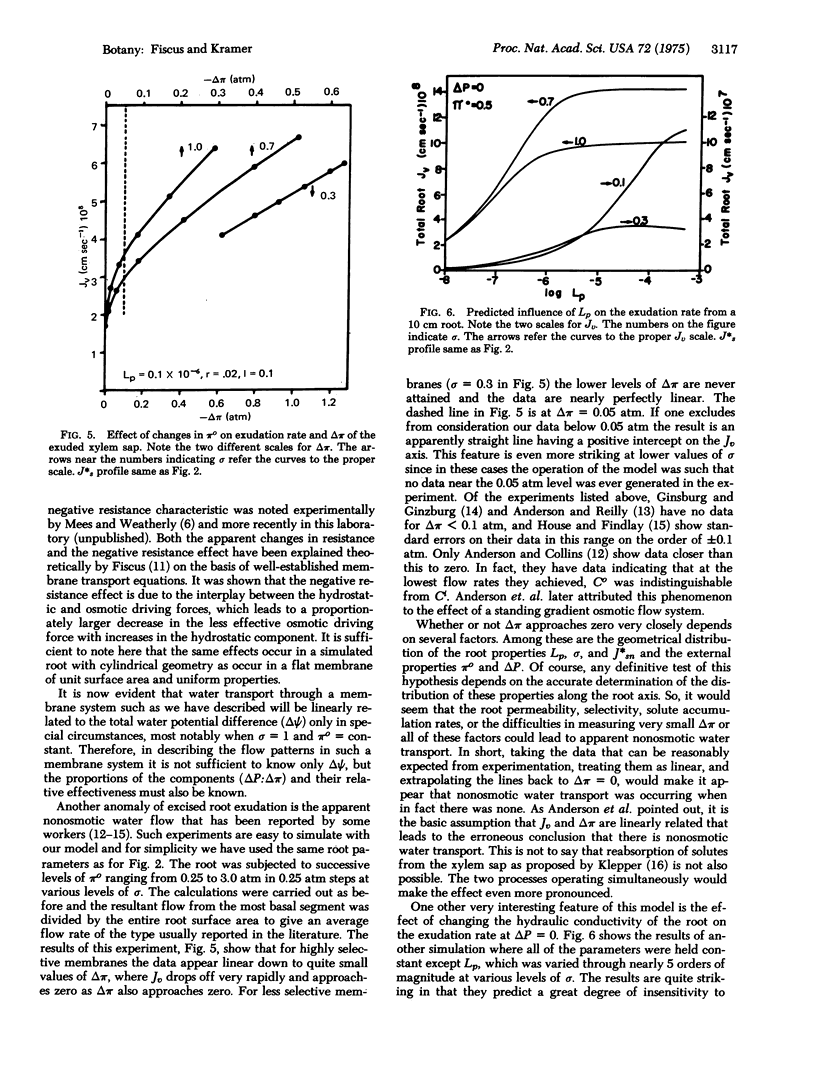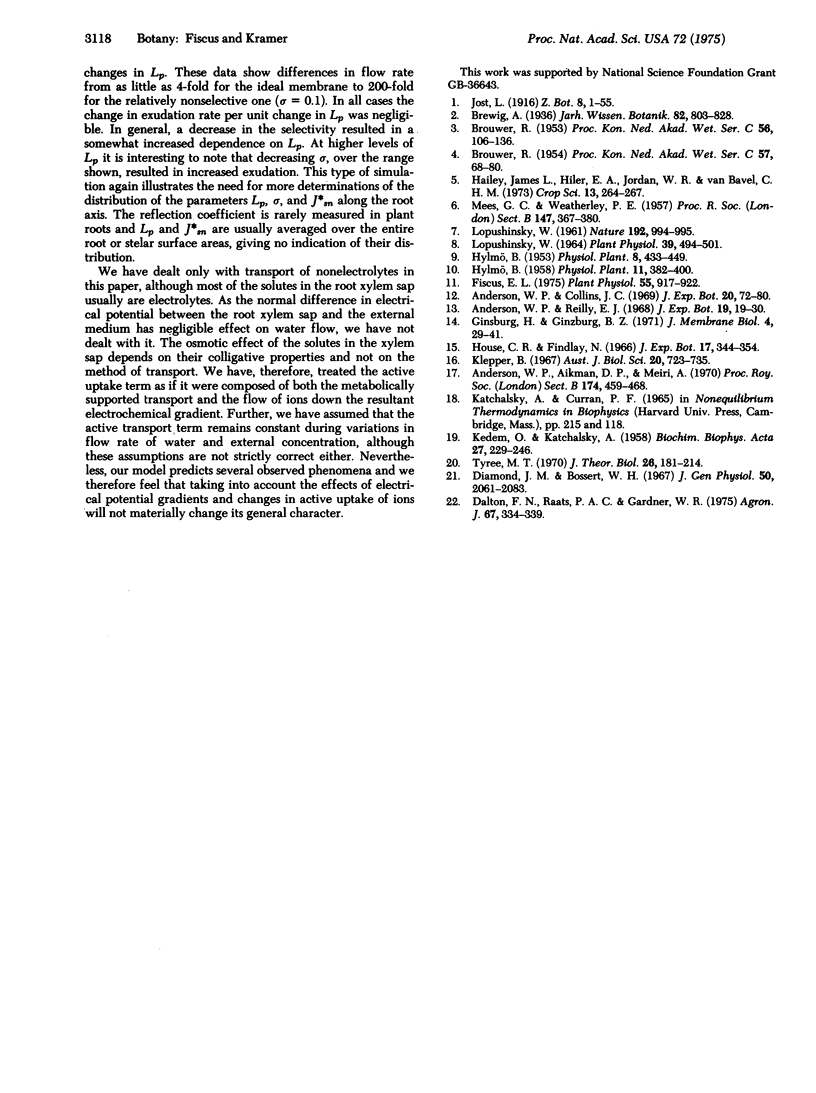Abstract
This paper presents a general model to describe coupled solute and water flow through plant roots when they are subjected to osmotic or hydrostatic pressure gradients, or both simultaneously. The model is based on well-established membrane transport equations derived from irreversible thermodynamic considerations. A variety of experimentally observed phenomena such as changes in root resistance with flow rate, apparent negative resistance effects, xylem sap dilution, and apparent non-osmotic water transport can be adequately explained with this model. The model also predicts that an exuding excised root system will be very insensitive to changes in the hydraulic conductivity coefficient. Previous work with a flat membrane of unit surface area and uniform properties is confirmed for a cylindrical coordinate system of nonuniform characteristics.
Keywords: root exudation, iso-osmotic flow, nonlinear root flow, root resistance changes, standing gradient root flow
Full text
PDF




Selected References
These references are in PubMed. This may not be the complete list of references from this article.
- Diamond J. M., Bossert W. H. Standing-gradient osmotic flow. A mechanism for coupling of water and solute transport in epithelia. J Gen Physiol. 1967 Sep;50(8):2061–2083. doi: 10.1085/jgp.50.8.2061. [DOI] [PMC free article] [PubMed] [Google Scholar]
- Fillenz M. The innervation of the cat spleen. Proc R Soc Lond B Biol Sci. 1970 Jan 20;174(1037):459–468. doi: 10.1098/rspb.1970.0005. [DOI] [PubMed] [Google Scholar]
- Fiscus E. L. The Interaction between Osmotic- and Pressure-induced Water Flow in Plant Roots. Plant Physiol. 1975 May;55(5):917–922. doi: 10.1104/pp.55.5.917. [DOI] [PMC free article] [PubMed] [Google Scholar]
- KEDEM O., KATCHALSKY A. Thermodynamic analysis of the permeability of biological membranes to non-electrolytes. Biochim Biophys Acta. 1958 Feb;27(2):229–246. doi: 10.1016/0006-3002(58)90330-5. [DOI] [PubMed] [Google Scholar]
- Lopushinsky W. Effect of Water Movement on Ion Movement into the Xylem of Tomato Roots. Plant Physiol. 1964 May;39(3):494–501. doi: 10.1104/pp.39.3.494. [DOI] [PMC free article] [PubMed] [Google Scholar]
- MEES G. C., WEATHERLEY P. E. The mechanism of water absorption by roots. I. Preliminary studies on the effect of hydrostatic pressure gradients. Proc R Soc Lond B Biol Sci. 1957 Dec 3;147(928):367–380. doi: 10.1098/rspb.1957.0056. [DOI] [PubMed] [Google Scholar]
- Tyree M. T. The symplast concept. A general theory of symplastic transport according to the thermodynamics of irreversible processes. J Theor Biol. 1970 Feb;26(2):181–214. doi: 10.1016/s0022-5193(70)80012-1. [DOI] [PubMed] [Google Scholar]


